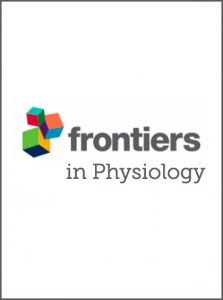Publications

Biomechanical and clinical differences in muscle tone, stiffness, range of motion, and pain perception in children with cerebral palsy: a cross-sectional study
Authors: Ramon Gonzalez-Matilla 1, 2, 3, Vanesa Abuin-Porras 4, Isabel Minguez-Esteban 4, Alberto M. Heredia-Rizo 3, 5, 6
Affiliations:
- Departamento de Fisioterapia, Investigacion y Deporte. Centro Universitario FISIDEC, Universidad de Cordoba, Cordoba, Spain
- Centro de Atencion Infantil Temprana, Universidad de Cordoba, Cordoba, Spain
- CTS 1110: Understanding Movement and Self in health from Science (UMSS) Research Group, Andalusia, Spain
- Department of Physiotherapy, Universidad Europea de Madrid, Faculty of Medicine, Health and Sports, Villaviciosa de Odon, Spain
- Instituto de Biomedicina de Sevilla, IBiS (Hospitales Universitarios Virgen del Rocio y Macarena/CSIC/Universidad de Sevilla), Sevilla, Spain
- Departamento de Fisioterapia, Universidad de Sevilla, Sevilla, Spain
Journal: Frontiers in Physiology - April 2025, Volume 16, Article no. 1588084 (DOI: 10.3389/fphys.2025.1588084)
-
Field & Applications:
- Medical
- Pediatrics
- Neurology
- Musculoskeletal disorder
- Normatives
- Validity
Introduction: Spasticity and altered muscle tone are key features in children with neurodevelopmental disorders, particularly cerebral palsy (CP). They impact movement, range of motion (ROM), and pain perception, influencing functional abilities and quality of life. Understanding the intrinsic muscle differences in children with CP can help improve clinical assessment and therapeutic interventions. This study aims to evaluate differences in muscle tone, stiffness, ROM, and pain perception between children with CP and typically developing peers using objective biomechanical measures.
Methods: An observational, cross-sectional study was conducted with 40 participants of both sexes (20 children with CP, 20 typically developing peers). Muscle tone and stiffness of the lower limb muscles were measured using the MyotonPRO device. ROM was assessed by goniometry, and pain perception was evaluated using the Visual Analog Scale during a Straight Leg Raise (SLR) test. A generalized linear mixed model was used to detect differences in myotonometry, ROM, and pain perception measurements. In participants with CP, the Pearson product-moment correlation coefficient analysis was used to explore possible associations between clinical features and muscle tone and stiffness.
Results: Children with CP exhibited reduced ROM, with a significant group effect for hip flexion (P < 0.001; η2 = 0.843), knee extension (P < 0.001; η2 = 0.355), and ankle flexion (P < 0.001; η2 = 0.959) and higher pain perception during the SLR test (P < 0.001; η2 = 0.831), compared to controls. Myotonometry revealed significantly increased muscle stiffness of the rectus femoris (P = 0.004; η2 = 0.112) and adductor muscles (P = 0.019; η2 = 0.074) in the CP group, with no differences in muscle tone between the groups. Sex-related differences were found for muscle tone and stiffness, with males showing higher values. Correlation analyses indicated that adductor muscles stiffness was associated with CP severity.
Conclusion: Children with CP demonstrate significant changes in ROM, pain perception, and muscle stiffness, emphasizing the need for targeted therapeutic interventions. These findings support the use of objective biomechanical tools for assessing muscle properties in clinical settings, contributing to better management strategies for spasticity-related impairments.
Keywords: cerebral palsy, muscle stiffness, spasticity, pain perception, myotonometry
Our findings suggest differences in muscle stiffness, ROM, and pain perception during the SLR test, between children with CP and their typically developing peers, particularly highlighting greater stiffness in specific lower limb muscles. These findings emphasize the importance of objective biomechanical assessment to guide targeted interventions aimed at reducing muscle stiffness and improving functional outcomes. Future research should explore longitudinal changes in muscle properties and investigate the effectiveness of specific therapeutic modalities informed by biomechanical measurements, thus further optimizing clinical management strategies for children with CP.


